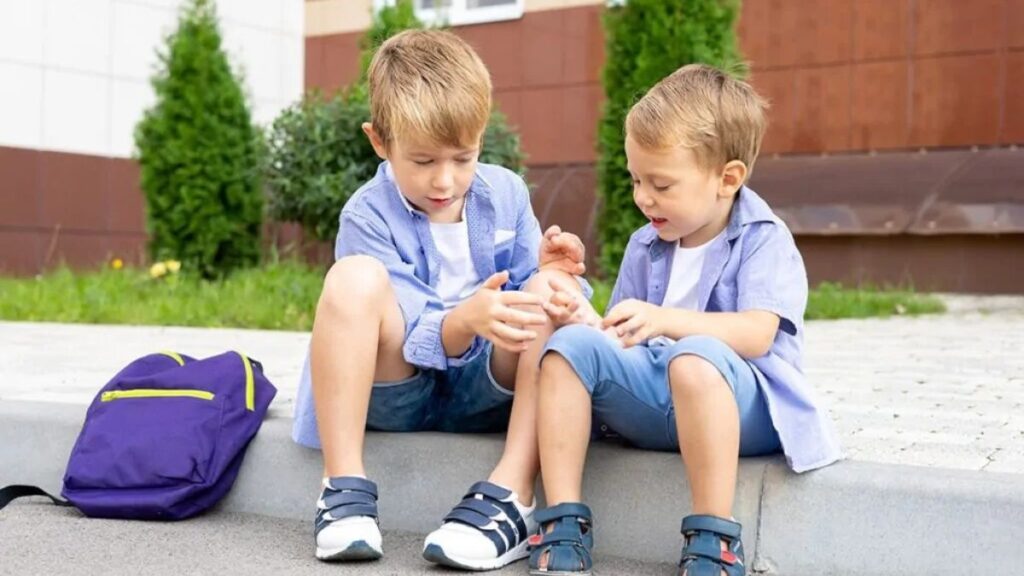Understanding the Importance of Proper Fit
Footwear is more than a fashion statement for children—it’s foundational to healthy development. Properly fitting sneakers play a critical role in supporting the structure of a child’s foot as it grows and develops. When children wear ill-fitting shoes, the risks extend beyond blisters or short-term discomfort. Shoes that are too tight can restrict natural foot movement, while shoes that are too loose may cause instability and frequent tripping. These issues can eventually result in persistent problems such as bunions, hammertoes, or even improper gait development.
The earlier parents recognize the impact of fit, the better equipped they are to make informed choices. A snug, but not tight, sneaker allows children to move, jump, and play confidently. Good sneaker sizing optimizes comfort, encourages an active lifestyle, and reduces the likelihood of injuries. For young children, finding the right toddler sneakers means balancing space for growth with a secure fit, supporting their natural movement as they explore the world. Children comfortable in their shoes are more likely to embrace active play, which is essential for physical health and social development during the early years.
Measuring Your Child’s Feet Accurately
Children’s feet can grow quickly, sometimes by more than a half-size in a few months, making it crucial to keep up with their changing shoe size. Many parents are surprised to learn just how much and how often kids’ feet change, even quickly. Measuring your child’s feet at least every two months ensures their sneakers keep up with their development and remain appropriate for fit and support. The best time to measure is at the end of the day when their feet are at their largest. Ensure your child is standing up straight during measurement, as putting weight on their feet gives a more accurate indication of their true size.
Measuring both feet is important, as one foot is often slightly larger than the other. Always choose sneakers that accommodate the larger foot to avoid pinching or discomfort. Parents can visit a professional shoe store for expert fittings, or use a home measuring tool designed for children’s feet if a visit is inconvenient. Remember that shoes that fit perfectly today may quickly become too tight, so regular measurements are necessary. Make sure there’s a thumb’s width of space between your child’s longest toe and the tip of the shoe, allowing room for natural movement and growth.
Key Features to Look for in Kids’ Sneakers
Choosing sneakers goes beyond mere sizing. Parents should consider materials and design features that support healthy foot development and ensure all-day comfort. Kids’ shoes should be designed with their activities in mind—running at recess or walking to and from school. Here are some features to prioritize:
- Flexibility: The sole should bend easily, especially at the ball, enabling natural motion during play and walking. Too-stiff shoes can restrict natural movement, while excessively soft soles might not protect enough.
- Durability: Kids are active, so durable materials—like reinforced toe caps, tough outsoles, and quality stitching—help sneakers withstand daily adventures and save you from frequent replacements.
- Support: Good arch and ankle support fosters proper alignment and prevents early foot fatigue or postural problems. Sneakers should cradle the foot without overly restrictive, providing gentle structure during high-energy moments.
- Breathability: Shoes made with mesh or perforated uppers allow airflow, reducing the risk of sweat and odor-related discomfort. Materials that wick away moisture are especially helpful for kids who are active for extended periods and may be prone to sweaty feet.
These characteristics contribute significantly to your child’s immediate comfort and long-term foot health. Lighter-weight shoes also reduce fatigue, making it easier for children to stay active and confident. Plus, features like Velcro straps or elastic laces can make it simpler for younger kids to put on and take off their own shoes, building independence.
Common Mistakes to Avoid
Despite their best intentions, many parents fall into common traps when shopping for sneakers for their children. One frequent error is purchasing shoes that are intentionally too big, in hopes of extending their lifespan. Ill-fitting oversized shoes can be more hazardous, causing children to trip, slip, or develop abnormal walking patterns. Children may compensate for extra space by gripping the insides of their shoes with their toes, which can lead to pain and stress in the foot muscles. Another misstep is disregarding the specific activity for which the sneakers will be used. For example, running shoes differ from casual sneakers worn at school; each activity benefits from shoes designed for proper support and shock absorption.
- Avoid ignoring signs of discomfort or changes in your child’s walking. These often indicate that the shoes no longer fit properly or lack adequate support.
- Don’t assume one pair of sneakers is suitable for all activities; running, school, and playground time may all benefit from shoes with specific features. Consider keeping different shoes for different purposes to support your child’s various interests.
- Failing to check shoes regularly for wear—especially in active kids—often results in children continuing to wear shoes that no longer provide proper support.
To help your family avoid these pitfalls, making thoughtful, intentional choices and conducting regular sneaker check-ins is important. Buying quality sneakers that fit well, rather than simply sizing up or settling for hand-me-downs, can mean the difference between happy, healthy feet and ongoing problems. Don’t overlook the value of trial and error—let your child walk and move in new shoes before committing, and pay attention if they express discomfort, even if it seems minor.
When to Replace Your Child’s Sneakers
Children’s sneakers may look rugged, but regular use wears them down more quickly than most parents expect. Active lifestyles and growth spurts mean that what fits and functions well one month may not the next. Signs it’s time for a new pair include obvious damage to the sole or upper material, a loss of cushioning or springiness, and complaints about pain and discomfort. Any changes in your child’s gait—such as limping or favoring one foot—can indicate that their current shoes are no longer up to the task or have become unevenly worn.
Consulting with Professionals
If you notice chronic foot pain, suspect developmental issues, or simply need advice, don’t hesitate to contact a pediatrician or pediatric foot specialist. These professionals can provide personalized guidance, reassure you about what’s normal, and help address any underlying issues before they become serious. Sometimes, subtle issues such as flat feet or unusual shoe wear patterns aren’t always noticed by parents but may be identified and treated early by an expert. Early intervention is key to quickly resolving most foot-related problems. Even a one-time consultation can offer reassurance and set children on a healthy path for years.
Final Thoughts
Finding the perfect sneakers for your child is an ongoing process that involves regular measurement, close attention to comfort and support features, and the willingness to replace shoes as soon as issues arise. Taking time to select the right size and style and monitoring your child’s feedback and foot health can make a tremendous difference. By prioritizing these considerations, parents can ensure their children’s feet stay healthy, comfortable, and ready for the next adventure—whether running at the park, walking through school hallways, or exploring new places on family outings. The right sneaker doesn’t just support little feet; it encourages confident exploration of the world.







